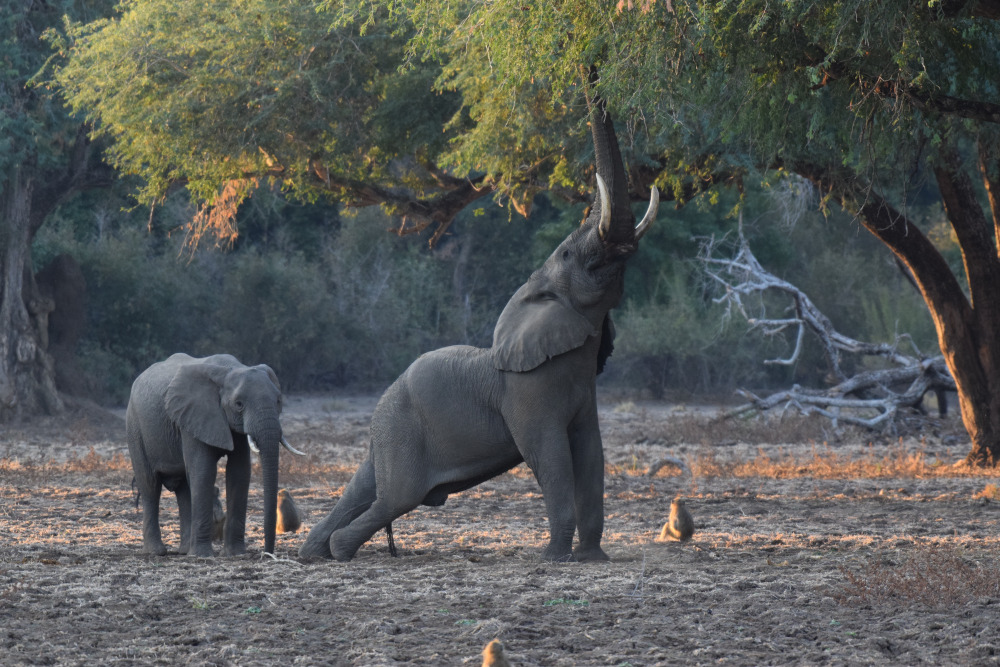As global leaders gather at the Convention on Biological Diversity COP16 in Cali, Colombia, the world’s attention is focused on the urgent need to protect our planet’s biodiversity. With this backdrop, a crucial question arises: What truly makes or breaks the success of species conservation?
While many would instinctively point to funding — and they wouldn’t be wrong — emerging evidence suggests there’s another equally critical factor: governance.
What exactly is governance, and how does it impact conservation? Governance refers to the rules, policies, and decision-making processes that guide how conservation projects are managed. It can range from approaches led by Indigenous peoples and local communities to government-led approaches and various hybrid models in between.
To be clear, governance is not the management of a project. It’s like the difference between setting the rules of a game and actually going out and playing the game. You can’t do either successfully without the other, but they’re not the same.
Governance is also the key that ensures everyone from local communities to national governments works together effectively, and we’re starting to definitively show that governance is just as crucial as funding for the success of conservation efforts. In fact, the 2030 Global Biodiversity Framework finally acknowledges this by highlighting governance explicitly in its targets. You can see that most clearly in its “Target 3: Conserve 30% of Land, Waters, and Seas.”
This isn’t theoretical. A study published in Conservation Letters in July 2024 provides a practical example of how governance impacts conservation on the ground. The study focused on African elephants and found that the two factors best predicting whether populations increased or declined were the funding allocated to the site and the effectiveness of governance. The study estimated a staggering $1.5 billion annual deficit needed to stabilize elephant populations across sub-Saharan Africa. Current spending is only about $226 million per year, resulting in an ongoing decline of elephant numbers.
Surprisingly the study found that even with insufficient funding, effective governance helped slow the decline in elephant numbers substantially, through stronger law enforcement, better management of resources, and active collaboration with local communities.

Stories like this demonstrate that when funding and effective governance align, conservation efforts are significantly more successful. However, we often only hear about governance impacts through isolated examples. To determine whether governance truly has substantial influence, we need a comprehensive understanding of how different types of governance affect conservation across all regions, ensuring that success isn’t just seen in snapshots but sustained worldwide.
To that end, a collaborative team of researchers — including myself — from World Wildlife Fund, the U.S. Fish and Wildlife Service’s International Affairs, the International Union for Conservation of Nature, the Canadian Centre for Evidence-Based Conservation, and various academic institutions undertook a global study that was released this month. Our research, Challenges in Assessing the Effects of Environmental Governance Systems on Conservation Outcomes, spanned conservation projects in Africa, Asia, and Latin America, seeking to uncover the relationship between governance and conservation outcomes.
The results, published in Conservation Biology, were quite surprising. Despite widespread recognition that governance is vital for driving conservation toward more just, equitable, and legitimate practices, leading to greater societal support and rule compliance, the field of conservation isn’t collecting sufficient empirical research. In fact only a tiny fraction — 3.2% of the more than 1,000 papers we screened — provided direct evidence linking governance to conservation outcomes.
We know countries require good governance for prosperity. Measuring and comparing different governance systems helps us evaluate which is most effective for a top-functioning society. Similarly, in conservation, while we know governance is crucial, we currently lack sufficient data to assess which types of governance models — whether community-led, government-managed, or hybrid approaches — are most effective at delivering the best results for species conservation. And it’s not a one-size-fits-all strategy. What works in one part of the world might not be the best option in another. Unfortunately, until we bridge this gap, we’re left with broad assumptions rather than evidence-based decisions.
“Effective governance is essential for conservation projects, but our findings show that the current evidence base is remarkably limited,” Matt Luizza, one of the study’s lead authors and staff in the Fish and Wildlife Service’s International Affairs program. “There is a significant gap in our understanding — it’s almost impossible to answer the question, ‘Do different types of governance lead to better or worse conservation outcomes?’ We simply need more empirical research.”
Why should we care about how conservation is governed? Because it directly impacts whether efforts to protect endangered species and their habitats actually succeed. As the Convention on Biological Diversity’s COP16 convenes, it’s the perfect time to advocate for increased research funding and stronger commitments to governance.
-
- Advocate to increase funding for research that links how conservation is governed to the outcomes it delivers and ensure that this research is shared openly and fairly.
- Encourage decision-makers to develop better tools to track the success of conservation projects, helping us know what works so we can replicate it.
- Push for stronger commitments on improved governance research at major events, like the CBD COP16, where global leaders gather to set conservation priorities.
- Finally, support initiatives that bring local communities, researchers, and policymakers together, ensuring that everyone’s voice is heard and that conservation efforts are tailored to the needs of both people and wildlife.
Governance might sound like something that only policy insiders worry about, but it plays a huge role in shaping the future of wildlife conservation. Strong governance ensures that every dollar spent on conservation is a dollar well spent. With this new research identifying key gaps in our knowledge base, we have the power to close them — and by doing that, we can elevate conservation efforts globally, securing a brighter future for both wildlife and the human communities that depend on them.
The opinions expressed above are those of the author and do not necessarily reflect those of The Revelator, the Center for Biological Diversity, or their employees.


